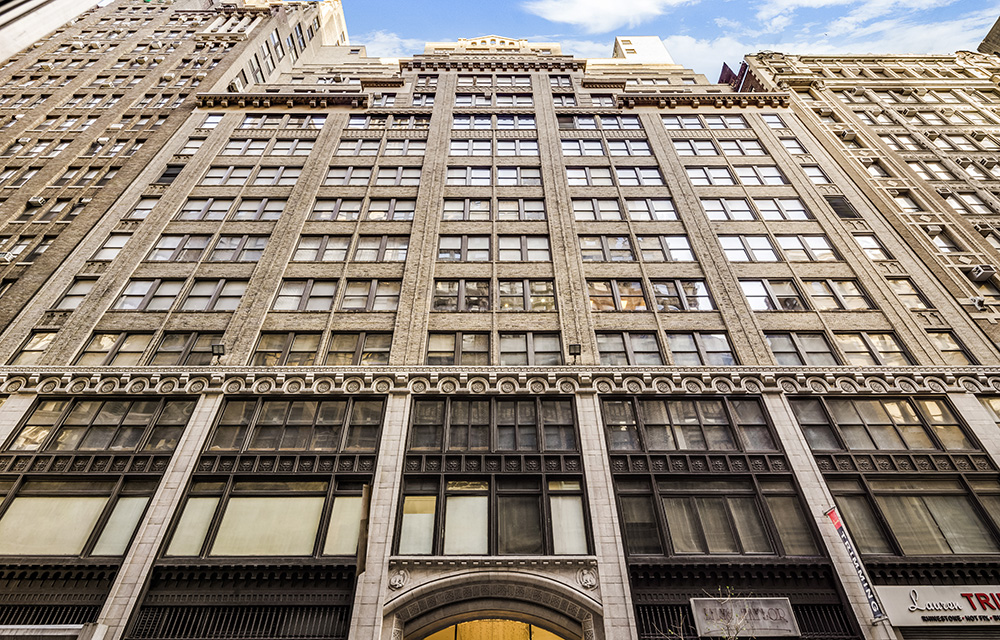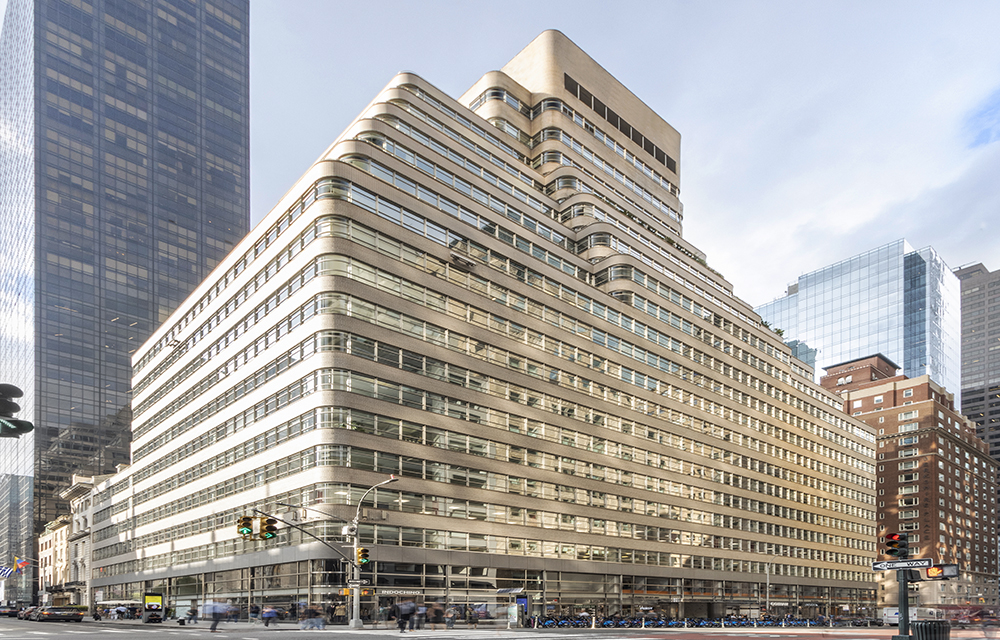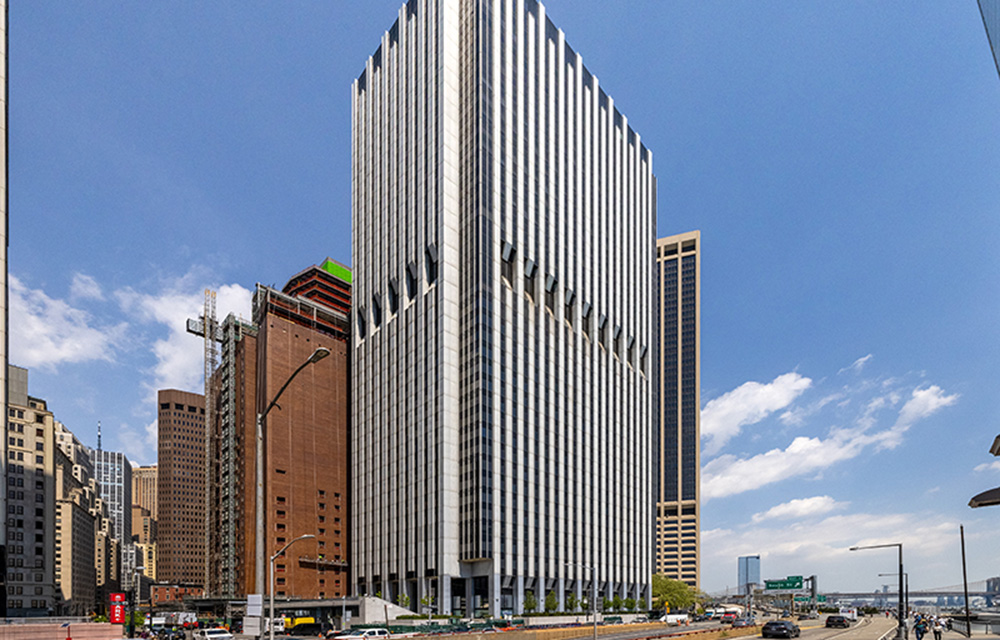News:
Brokerage
Posted: April 21, 2014
Colliers' Q1 Report: Manhattan office market continues to rise, but with a Tale of Three "Cities"
The overall Manhattan office market showed solid gains in the first quarter of 2014, registering declines in overall availability and vacancy rates and an increase in asking rents, according to new research from Colliers International. But among the three major markets, the individual trajectories took separate paths.
Midtown South and Downtown enjoyed strong leasing activity, with both new tenants entering these markets and existing occupiers adding employees as their businesses continue to grow. The demand for space in Midtown North, however, is feeling the impact of major tenants relocating or not achieving organic growth.
The overall Manhattan office availability rate was 11.4% at the end of the first quarter, down slightly from 11.7% in the end fourth quarter of 2013, and down from 12.1% year-over-year.
Despite the overall declines, Midtown North registered an 11.8% availability rate in the first quarter, up slightly from 11.2% in the fourth quarter of 2013 and 11.6% in the third quarter. Availability increased as blocks of space that will lose their current occupiers over the next several years to relocations outside of Midtown North started to be listed as available in recent quarters.
In the first quarter, Condé Nast returned more than 800,000 s/f of space at 4 Times Sq. Meanwhile Group M will be relocating from 237 Park Ave. to Lower Manhattan, and L'Oreal, which is relocating from 575 Fifth Ave. to Hudson Yards, will essentially empty an entire building.
The overall Midtown North vacancy rate has also remained essentially flat over the last five quarters, in the 6.8% to 7.1% range. Unless new demand develops, the Midtown North rate will climb as space is vacated over the next several years.
Midtown South tells a different story. The submarket's overall availability rate dropped to 8.8% in the first quarter of 2014, down from 9.7% in the fourth quarter and just slightly lower than the 9% a year ago. Also, the Midtown South vacancy rate ended the first quarter of 2014 at 5%, down from 5.5% in the fourth quarter, and close to the 4.3% level from a year ago.
Yet it was Downtown that showed the largest improvement in absolute levels. At 14.4%, the submarket's overall availability rate declined from 15.6% in the fourth quarter, and from 16.1% year-over-year. Also, after drifting higher for much of 2013, Downtown's vacancy rate declined, to 7.8%, down from 8.3% in the fourth quarter but still up significantly from 5.3% year-over-year.
Overall Manhattan average asking rent also continued to rise, reaching its highest level since the fourth quarter of 2008. At $63.59 per s/f, asking rents are up 5.2% from $60.46 per s/f in the fourth quarter and 14.1% from $55.74 per s/f year-over-year.
Though counter-intuitive, despite the overall availability and vacancy rate increases, Midtown North's average asking rent increased 5.4% to $73.49 per s/f, up from $69.73 per s/f, in the fourth quarter and 13% from $65.02 per s/f, year-over-year. The increase was driven by three key factors: continued demand for tower floor trophy space, which typically commands triple-digit rents; several leases for less costly space in lower floors removing these blocks from the average; and new space in prime locations introduced to the market with asking rents above the overall average.
At $55.53 per s/f,, Midtown South reported a slight increase from $55.32 per s/f, at the end of the fourth quarter, but up 9.7% from $50.62 per s/f, year-over-year. The modest overall rent increase in Midtown South was largely caused by the leasing of some of the most expensive spaces in that market, which reduced the size of the gain in average rent.
Downtown also saw a rise in asking rents, to $50.25 per s/f,, up 3.4% from $48.60 per s/f, at the end of fourth quarter and 10.6% from $45.45 per s/f, year-over-year. The gains were submarket-wide, but the largest rent-level increases occurred in the World Trade Center district, where the average jumped to $59.21 per s/f, up from $55.73 per s/f, in the fourth quarter and $50.84 per s/f, one year ago.
In terms of overall activity, Manhattan recorded 11.9 million s/f of leasing in the first quarter of 2014, which not only represents a very strong start for the year, but is 145% greater than the 4.86 million s/f leased in the first quarter of 2013. With steady, but still subpar, economic growth during 2014, total leasing for the year should be above the long-term average of roughly 30 million s/f.
Midtown North reported a below-average leasing quarter, at 4.6 million s/f. This total also includes one of the largest deals of the quarter — the 950,000 s/f Time Warner Inc. short-term leaseback at 60 Columbus Circle. Meanwhile, Midtown South was especially active, with 4.97 million s/f of leasing, maintaining its position as one of the country's most dominant submarkets, with significant leases signed at 51 Astor Place and 11 Madison Ave..
Downtown registered 2.4 million s/f, about half its pace in the fourth quarter but nearly double the long-term average for Lower Manhattan. Group M's 515,000-square-foot lease at 175 Greenwich St. (3 World Trade Center) was one of the largest for the quarter. In addition, the publishing industry continued its migration Downtown, as evidenced by Nature Publishing's 176,000 s/f lease at One New York Plaza. Revlon's 91,000 s/f lease was also at One New York Plaza.
"The Manhattan office market continues to improve overall, and if this pace continues we are poised for a healthy year," said Joseph Harbert, president of the eastern region for Colliers International. "We also saw a clear shift in leasing patterns. Midtown North recorded just an average quarter, at best, whereas Midtown South and Downtown were both dramatically more active relative to historic norms. There were several major relocations to Lower Manhattan, indicating the extent to which the accepted paradigms of the Manhattan leasing market have changed over the past few years."
Investment Sales Activity Shifted to Class B Properties
Investor interest in Manhattan office buildings remains strong, supported by low overall financing costs and increasing rents in most sectors of the market. Further, international buyers see Manhattan as a safe haven, with Chinese buyers being particularly active.
Twenty-one investment sales transactions closed in the first quarter, totaling nearly $1.4 billion in activity, with an overall shift toward smaller, class B properties. Though the activity was less than half the $3.8 billion volume registered a year ago, more than $5.5 billion of transactions are under contract.
Pricing also remains strong. The average class B transaction closed at $766/sf in the first quarter of 2014, up 28% from $596 per s/f in the fourth quarter of 2013.
Tags:
Brokerage
MORE FROM Brokerage
Meridian Capital Group arranges 10-year retail lease for Mess at 236 West 10th St.
Manhattan, NY According to Meridian Capital Group, Jordan Langer, Noam Aziz and Carson Shahrabani of the firm’s retail leasing team have arranged a five-year lease at 236 West 10th St. in Greenwich Village

Columns and Thought Leadership

AI comes to public relations, but be cautious, experts say - by Harry Zlokower
Last month Bisnow scheduled the New York AI & Technology cocktail event on commercial real estate, moderated by Tal Kerret, president, Silverstein Properties, and including tech officers from Rudin Management, Silverstein Properties, structural engineering company Thornton Tomasetti and the founder of Overlay Capital Build,

Strategic pause - by Shallini Mehra and Chirag Doshi
Many investors are in a period of strategic pause as New York City’s mayoral race approaches. A major inflection point came with the Democratic primary victory of Zohran Mamdani, a staunch tenant advocate, with a progressive housing platform which supports rent freezes for rent

Behind the post: Why reels, stories, and shorts work for CRE (and how to use them) - by Kimberly Zar Bloorian
Let’s be real: if you’re still only posting photos of properties, you’re missing out. Reels, Stories, and Shorts are where attention lives, and in commercial real estate, attention is currency.

Lasting effects of eminent domain on commercial development - by Sebastian Jablonski
The state has the authority to seize all or part of privately owned commercial real estate for public use by the power of eminent domain. Although the state is constitutionally required to provide just compensation to the property owner, it frequently fails to account








.jpg)
.gif)
.gif)